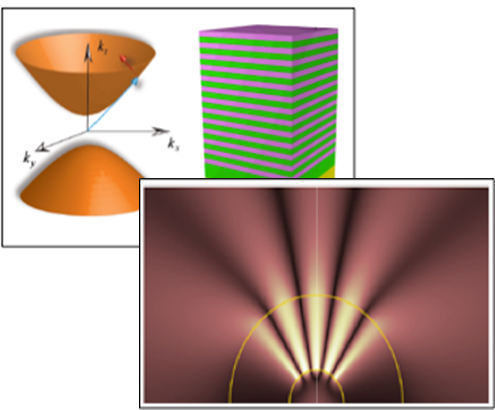This IRG will investigate metamaterials- particularly chiral, quasiperiodic and hyperbolic MMs – and MM-inspired structures with unusual properties such as near-field plates and hyperlenses, and develop understanding applicable to communication, sensing and imaging.

Metamaterials (MMs) are homogeneous artificial mixtures, that is, composites for which the distance be-tween neighboring inclusions is significantly smaller than the wavelength of interest. Recent advances in assembly methods, micro- and nanofabrication, coupled with an increased understanding of their electro-magnetic (EM) response have led to the synthesis of composites whose behavior is quite unlike those of natural materials. Negative refraction, cloaking, plasmonic hot-spots, super-resolution, and high-frequency magnetism are but a few of the terms that were introduced into the scientific vocabulary during the past decade following continuous progress in MMs research. This IRG program provides a comprehensive approach for the development of novel composites; particularly chiral, quasiperiodic and hyperbolic MMs; and MMs-inspired struct
ures with unusual physical properties, such as near-field (NF) plates and hyperlenses. The research combines state-of-the-art self-organized, epitaxial growth and lithographic techniques with the development of innovative NF experimental tools, together with a strong theoretical basis and a multiplicity of characterization methods.
An example of the way recent breakthroughs in metamaterialsresearch has opened up new frontiers in photonics is the recent demoonstration by Shalaev and coworkers at Purdue that the high losses normally present in plasmonic MMs can be overcome by incorporating gain media within the composite. In another example, at the University of Michigan, Merlin and colleagues have devised novel structures such as near-field plates for superresolution imaging. Based on these and related breakthroughs, IRG2 explores this newly opened frontier of MMs as a partnership between Michigan and Purdue, with additional collaborations from the University of Texas and Wayne State University.